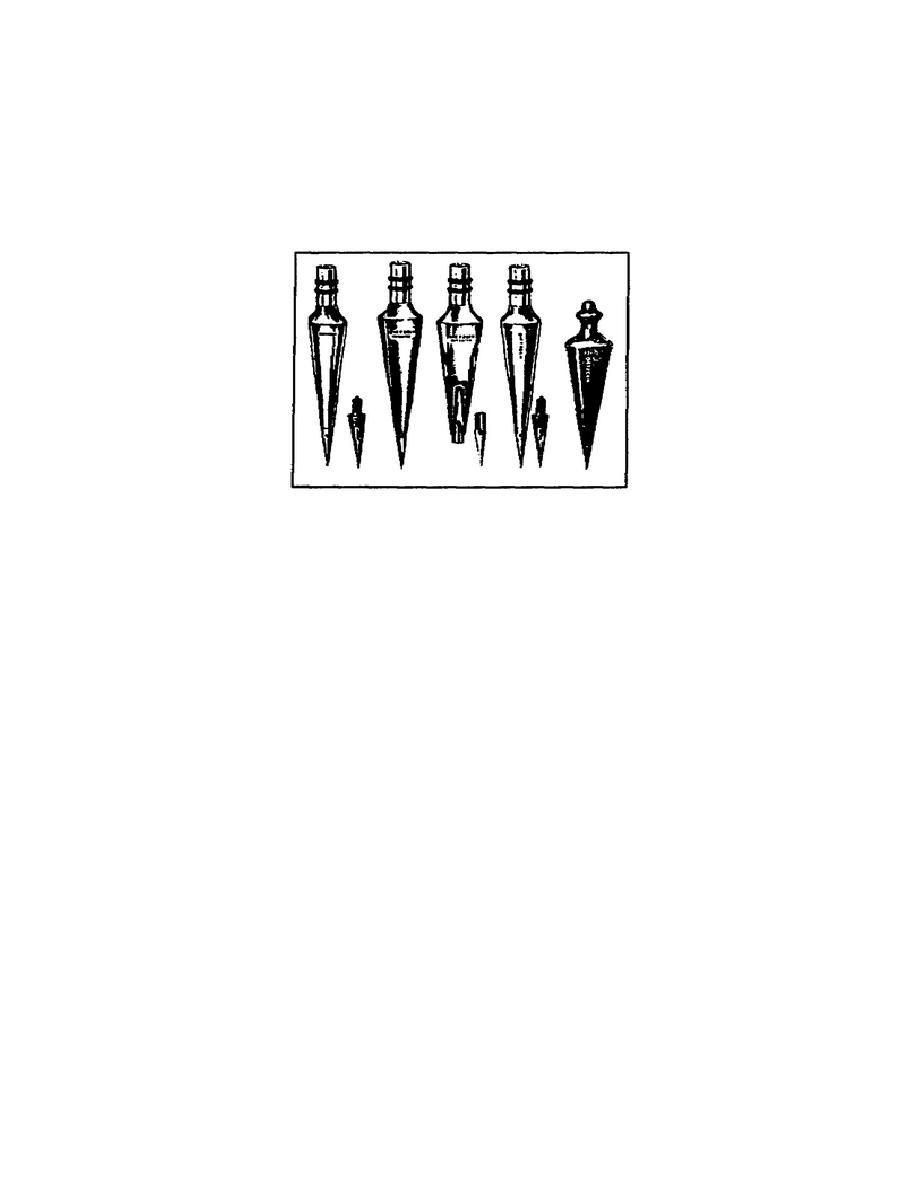
the plumb bobs are 6, 8, 10, 12, 14, 16, 18, and 24 ounce; the 12- and 16-ounce weights are the most
popular. Typical plumb bobs are shown in Figure 5-13.
(1) A plumb bob is a precise instrument and must be cared for as such. If the tip becomes
bent, the cord from which the bob is suspended will not occupy the true plumb line over the point
indicated by the tip. A plumb bob usually has a detachable tip, a shown in Figure 5-13. If the tip
becomes damaged, it can be renewed without replacing the entire instrument.
Figure 5-13. Plumb bobs
(2) Each survey party member should be equipped with a leather sheath for the plumb bob,
and it should be placed in the sheath whenever it is not in use. The cord from a plumb bob can be made
more conspicuous for observation purposes by attaching an oval-shaped aluminum target (Figure 5-14,
view A, page 5-14). The oval-shaped target has reinforced edges with alternate red and white quadrants
on is face. Also, a flat rectangular plastic target may be used (Figure 5-14, view B, page 5-14). It has
rounded comers with alternate red and white quadrants on its face. These plumb-bob string targets are
pocket size (approximately 2 by 4 inch).
d. Optical Plummet. The optical plummet is a device built into the theodolite or the tribrach of
some instruments to center the instrument over a point. Its working principle is shown n Figure 5-15,
page 5-14.
The plummet consists of a small prismatic telescope with a crosshair or marked-circle reticle adjusted to
be in line with the vertical axis of the instrument. After the instrument is leveled, a sighting trough the
plummet will check the centering over a point quickly. The advantages of the plummet over the plumb
bob are that it permits the observer to center over a point from the height of the instrument stand and that
it is not affected by the wind. A plumb bob requires someone at ground level to steady it and to inform
the observer on the platform how to move the instrument and when it is exactly over the point. With the
plummet, the centering and checking is done by the observer.
5-13
EN0591



 Previous Page
Previous Page
